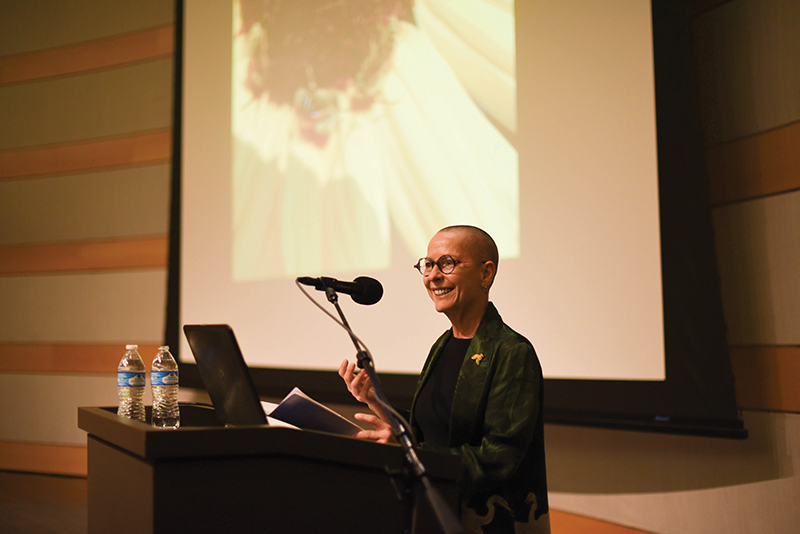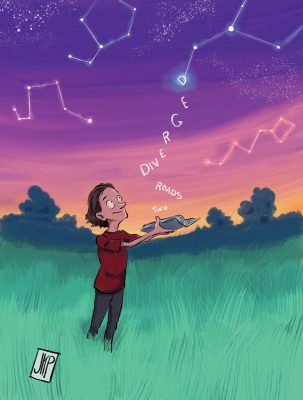
Greater than the Sum of our Parts: The Field Work Program’s Interdisciplinary Enrichment
Art
In the spring of this year, multiple institutions, organizations and academic individuals across Salt Lake, pooled their resources and disparate knowledge bases to cooperate in a pilot program called Field Work: Aligning Poetry & Science. The program aims to explore the ways that the language of poetry and the language of science might work together to engender something greater than either could manage alone. Funded by the Institute of Museum and Library Services, Field Work brought together the Salt Lake Public Library, the Natural History Museum of Utah, the Poet’s House library in New York, many local scientists, and many local poets including our own nationally renowned Katherine Coles.
We all have something to learn from each other. Lee Briccetti, Executive Director of the Poet’s House of New York City, one of the world’s great poetry libraries, says, “Poetry and science both, in their own ways, help us to observe and articulate with precision—to imagine and be in the world.”
The Field Work program ran from early spring through the first week in December and included a wide variety of readings, workshops and a nature hike. Events like Make Your Own Field Journal, Nature Poetry Writing, and Plant Pressing & Nature Sketching saw healthy turnouts. There was even a Fieldwork Storytime event for younger children. “The NHMU’s four-week series, where participants went out into nature with scientists then worked on field journals with artists and bookmakers, was great,” says Coles. “And I especially enjoyed the poetry/science cafes, which brought poets and scientists into direct conversation. The audiences, which were large, loved these.”
“Poetry and science both, in their own ways help us to observe and articulate with precision.”

Scientists and poets would pair off and cohost these particular events, which, as Briccetti says, obliged these practitioners to “step outside their specialized language to find a more collaborative way of communicating.” NHMU Public Programs Manager Colleen McLaughlin, who oversaw the first two of these Science Cafes, explains that “by pairing a scientist and poet who were exploring the same topic through a different lens, we hoped to illustrate the intersection of poetry and science and the synergies that exists between two different disciplines,” McLaughlin says. “The result was […] thought-provoking and accessible.” Already, the success of these Science Cafes has led to their format being replicated by other organizations here and in other cities.
Looking back on the events the organization hosted both in SLC and Milwaukee, representatives from the library and the history museum had nothing but praise for the Field Work initiative. Audience feedback was equally positive. Tommy Hamby coordinated the events held at SLCPL. The audience was “engaged in ways they didn’t realize were available to them,” says Hamby. “Something magic (for lack of a better word) happens when a scientist is invited to relate their work to poetry and a poet relates their work to science—it’s remarkable.”
“We had never done a program like this before,” says McLaughlin. “Participants loved it, and reported to us that they enjoyed being stretched to do something new, [being] exposed to new perspectives and [being] given the opportunity to see connections between science and poetry. Field Work also gave us the opportunity to reach out to a broader new audience who may not be regular museum goers. That was a great benefit of the program.”
“Something magic … happens when a scientist is invited to relate their work to poetry and a poet relates their work to science.”
Although Field Work’s first run of events has ended, this was just a pilot program, and the success it had—both here and in Milwaukee, will hopefully lead to more cities taking on the challenge of this interdisciplinary approach to public events in the future.
Interested parties can still visit Poetry Path that bears the indelible mark of the Field Work initiative’s impact on our city. Curated by Katherine Coles, this series of poetic excerpts engraved on large stones lines the section of the Bonneville Shoreline Trail starting from the Natural History Museum of Utah. With excerpts from poets such as Octavio Paz, Simon J. Ortiz and Frank Bidart, the Poetry Path is the ethos of the Field Work program set in stone … and given the nature of this issue of SLUG I hope you’ll excuse the pun!
More on SLUGMag.com:
Chocolate: The Exhibit @ The Natural History Museum of Utah
CITYART Reading Series: Thirty Years of Beauty & Truth
